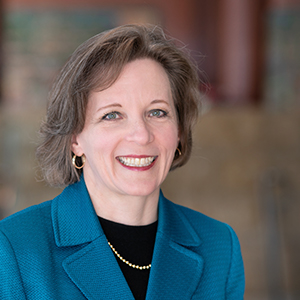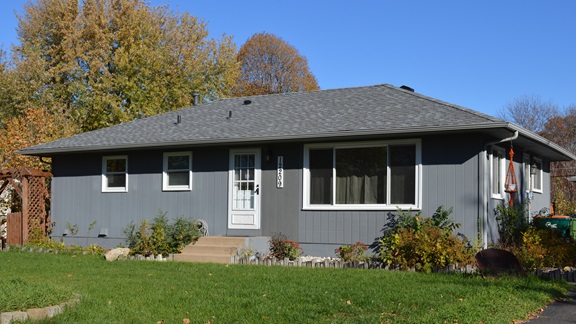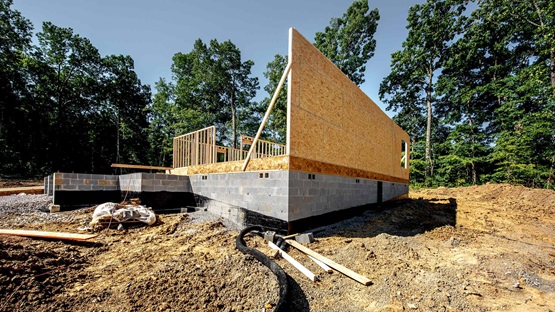There are bullet holes in all kinds of places in the North Minneapolis neighborhood where former city council member Don Samuels lives.
Across the street from his house is a car with oddly placed stickers on the back. He said the stickers are there to cover up the holes.
Down the block are two homes on opposite sides of the street, each with lots of bullet holes in their siding. Samuels said one of the homes belongs to a local landlord who, like many landlords here, doesn’t pay much attention to crimes committed at their properties. The other belongs to a homeowner with two kids who were caught in the crossfire between the renter across the street and a gunman in a car.
“Yeah, that’s what happens on our street here,” he said. “That’s what happens when you live in a heavy rental community where behaviors are not managed.”
The strategy of landlords here is to maximize profits by minimizing maintenance and renting to people who wouldn’t complain to authorities about substandard living conditions, according to Samuels. Sometimes those are people with eviction records who can’t find housing elsewhere, and sometimes they’re criminals.
North Minneapolis neighborhoods do, in fact, have some of the highest rates of investor ownership in the Twin Cities metropolitan area, according to a new data tool developed by the Federal Reserve Bank of Minneapolis. The rates were already higher than average before the subprime mortgage crisis but grew worse as homes were foreclosed and scooped up by landlords. For example, in 2006, in the census tract that includes Samuels’ block, investors owned 16 percent of residential properties that might otherwise have been bought by homeowners, compared to 1.8 percent throughout the seven-county metro area. By 2021, they owned 20.6 percent in that census tract, compared to 4 percent in the metro area.
The rise in investor ownership has been observed nationwide, raising many questions about the impact on quality of life and opportunities for homeownership. While investor ownership of single-family homes creates rental opportunities in neighborhoods where they might not otherwise exist, certain strategies pursued by investors seeking to maximize profits can, for example, lead to a deterioration of housing quality. Investors with deep pockets may make it harder for families, particularly lower-income households who are more likely to be people of color, to compete in the home-buying process.
For Twin Cities neighborhood activists, affordable housing advocates, and policymakers concerned about such impact, the Minneapolis Fed’s new tool may help by providing an estimate of investor ownership down to the census-tract level for the Twin Cities area. The tool also estimates the amount of property held by investor firms and networks, providing insight into the strategies of investors of different sizes.
“Having the data and being able to see it is going to be really useful for us as we’re working on new policies and programs in the city,” said Katie Topinka, a manager in Minneapolis’ Community Planning and Economic Development department who participated in a Minneapolis Fed focus-group session about the tool. “It kind of confirms what we know and have been talking about for a long time.”
Broad trends
A close look at the data reveals trends about investor ownership, some confirming long-held beliefs and others demanding further research. Investor is defined here as a person or entity that owns two or more non-homesteaded single-family homes, condos, or twin homes, though the tool allows changes to this threshold.1
The algorithm that powers the tool examined hundreds of thousands of publicly available property records for Anoka, Carver, Dakota, Hennepin, Ramsey, Scott, and Washington counties, from 2006—just before the mortgage crisis—to 2021. The focus was on properties that families would typically purchase for housing: single-family homes, townhouses, and condos. Apartments, duplexes, and the like were excluded because, typically, they’re already owned by investors.
Investor ownership rates in the Twin Cities metro area did increase during the mortgage crisis, from 1.8 percent in 2006 to 2.5 percent in 2008. But those rates really grew after 2012, around the time the federal government began encouraging national investment firms to buy up remaining distressed properties for fear that low demand from individual home buyers would result in the housing market’s collapse. The growth rate has since slowed, largely keeping pace with the growth in new residential properties. (See Figure 1.)
Areas with a high concentration of investor-owned properties in 2021 include census tracts in North Minneapolis and close to downtown St. Paul, many of which have higher-than-average poverty rates and crime rates. But they also include census tracts in suburbs, such as Fridley, Hopkins, and Stillwater. (See Figure 2.)
| Rank | Census tract | Location | County | Share of properties owned by investors (%) |
2019 poverty rate (%) |
|---|---|---|---|---|---|
| 1 | 27053104000 | Minneapolis—Northeast | Hennepin | 30.7 | 41.7 |
| 2 | 27003051203 | Fridley | Anoka | 27.1 | 10.3 |
| 3 | 27053023400 | Hopkins | Hennepin | 24.8 | 13.7 |
| 4 | 27053100800 | Minneapolis—North | Hennepin | 22.5 | 14.2 |
| 5 | 27053100900 | Minneapolis—North | Hennepin | 22.3 | 31.0 |
| 6 | 27053125700 | Minneapolis—North | Hennepin | 21.2 | 28.7 |
| 7 | 27123031400 | St. Paul—North End | Ramsey | 19.1 | 26.1 |
| 8 | 27053102800 | Minneapolis—North | Hennepin | 17.6 | 42.5 |
| 9 | 27123031000 | St. Paul—Payne-Phalen | Ramsey | 16.6 | 27.7 |
| 10 | 27123032600 | St. Paul—Frogtown | Ramsey | 16.1 | 25.1 |
| 11 | 27123031600 | St. Paul—Payne-Phalen | Ramsey | 16.1 | 33.3 |
| 12 | 27123033500 | St. Paul—Summit University | Ramsey | 15.8 | 38.0 |
| 13 | 27123032500 | St. Paul—Frogtown | Ramsey | 15.5 | 27.5 |
| 14 | 27053100400 | Minneapolis—North | Hennepin | 15.1 | 41.9 |
| 15 | 27123030900 | St. Paul—Payne-Phalen | Ramsey | 14.8 | 28.7 |
| 16 | 27053102000 | Minneapolis—North | Hennepin | 14.4 | 10.9 |
| 17 | 27163070703 | Oak Park Heights-Stillwater | Washington | 14.4 | 7.2 |
| 18 | 27053002700 | Minneapolis—North | Hennepin | 14.2 | 34.8 |
| 19 | 27053108000 | Minneapolis—South | Hennepin | 13.6 | 3.8 |
| 20 | 27053000102 | Minneapolis—North | Hennepin | 13.4 | 28.7 |
There’s a great deal of variation, even in areas that are close together. While the investor-ownership rate is 20.6 percent in Samuels’ census tract located in the city’s Jordan Neighborhood, it’s only 1 percent in a nearby census tract in the Sumner-Glenwood Neighborhood that includes recently redeveloped housing. It’s 10.7 percent in the census tract that includes The Lakes, a development in the northern suburb of Blaine that’s made up mostly of single-family homes built around artificial lakes. In an adjacent census tract with a similar setting, the rate is only 3.6 percent.
Using a location quotient (LQ) metric2 to compare the investor-ownership rate of a city or census tract with that of the metro area as a whole shows that investors in nearly all classes have focused their attention on Minneapolis and St. Paul, which have the third- and second-highest LQs, respectively. If investors were spread out evenly across all properties in the metro area, the LQ would be 1.00 throughout the region. Minneapolis has an LQ of 1.61 and St. Paul 1.68 (see Figure 3), meaning investor ownership is more than one and a half times as concentrated in Minneapolis and St. Paul as elsewhere. The city with the highest LQ is Fridley, a suburb on Minneapolis’ northeastern border, with a concentration of investors nearly three times the metro average.
| City | County | Urban/ suburban | All investors | Small investors (2–9 properties) |
Medium investors (10–19 properties) |
Large investors (20–49 properties) |
Very large investors (50+ properties) |
|---|---|---|---|---|---|---|---|
| Minneapolis | Hennepin | Urban core | 1.61 | 1.61 | 1.62 | 1.97 | 1.35 |
| St. Paul | Ramsey | Urban core | 1.68 | 1.58 | 2.11 | 2.21 | 1.53 |
| Fridley | Anoka | Inner suburbs | 2.72 | 3.03 | 2.67 | 1.55 | 1.79 |
| Brooklyn Center | Hennepin | Inner suburbs | 1.55 | 1.04 | 2.14 | 3.08 | 2.87 |
| Golden Valley | Hennepin | Inner suburbs | 0.76 | 0.57 | 0.90 | 0.31 | 2.11 |
| Edina | Hennepin | Inner suburbs | 0.75 | 0.91 | 0.82 | 0.23 | 0.17 |
| Roseville | Ramsey | Inner suburbs | 1.08 | 0.93 | 1.08 | 1.30 | 1.83 |
| Maplewood | Ramsey | Inner suburbs | 0.83 | 0.88 | 0.64 | 0.71 | 0.81 |
| Blaine | Anoka | Outer suburbs | 0.95 | 0.77 | 0.62 | 0.29 | 2.76 |
| Chanhassen | Carver | Outer suburbs | 1.35 | 1.39 | 0.84 | 0.41 | 2.35 |
| Stillwater | Washington | Outer suburbs | 1.32 | 1.65 | 1.17 | 0.16 | 0.37 |
Most of the growth in investor ownership in the metro area has been with very large investors, those owning 50 or more properties. In 2006, these investors owned less than 1 percent of all investment properties in the metro area. In 2021, they owned 11.6 percent, with high concentrations in North Minneapolis, central and eastern St. Paul, some nearby suburbs, and outer suburbs far from the urban core, such as Chanhassen and Lakeville. This increase comes primarily at the expense of small investors, those owning two to nine properties. They were and still are the most numerous class of investors, but their share of investor-owned properties owned has fallen from 87.1 percent in 2006 to 68.7 percent in 2021. (See Figure 4.) Medium to large investors have also increased their holdings but not as dramatically as very large investors.
Counted among the very large investors are national rental firms such as Invitation Homes and Home Partners of America, which each owned more than 800 homes in the metro area as of 2021. But the category also includes some local firms. Instant-buyer groups such as Zillow and Opendoor had been in this category in 2019 but reduced their holdings during the uncertainty of the pandemic economy. Other investor classes are made up mostly of local landlords, with a smattering of national investors.
Drilling down
Because the new tool goes down to the census-tract level, it can be used to understand what’s happening in units smaller than a neighborhood.
For example, investor ownership in the census tract where Samuels lives has risen by a third since 2006, largely because of medium to large investors. Like many Twin Cities tracts with high concentrations of investor-owned properties, Samuels’ has an above-average poverty rate; more than 40 percent of the population lived in poverty as of 2019 and the LQ is nearly five times the metro average. Before the Great Recession, there were already many more investor-owned properties in the tract relative to the rest of the Twin Cities, nearly all of them owned by small local investors. In the aftermath of the recession, the holdings of small investors fell for a few years before rising to 13 percent, close to pre-recession levels. During the same period, the tract saw a significant influx of medium to large investors, most of them local landlords. Together, these two investor classes increased their holdings from 1.7 percent of all properties in 2006 to 6.6 percent in 2021. Very large investors have also increased their holdings but not to the same extent, from zero to 1 percent.
The opposite trend is found in the census tract around Blaine’s The Lakes development, a more affluent community; the poverty rate in 2019 was 2.9 percent. In 2006, the investor-ownership rate was 2.3 percent, nearly all of them small investors. Starting in 2011, investor ownership grew rapidly, reaching a peak of 12.6 percent in 2013. Most of the investment properties were bought up by very large investors, who previously owned zero properties in the tract. As of 2021, the investor ownership rate was 10.7 percent.
Housing experts have found that those who invest in areas with high poverty and low property values tend to pursue strategies like those Samuels described. That is, they buy cheap properties, charge relatively high rent to tenants who have few housing alternatives, and provide minimal maintenance to maximize their profits. Since the properties were bought cheap and there’s little prospect they’ll appreciate much in value for resale, there’s no incentive to take care of them.
Areas like The Lakes that have low poverty and higher property values would more likely attract investors interested in taking care of the properties, which means being selective of tenants to ensure higher resale prices down the road.
In North Minneapolis, the Minneapolis Fed’s analysis suggests that Samuels has his work cut out for him. The investor-ownership rate had peaked in 2014 and had fallen gradually until 2021, when it started to rise again. The high crime and high poverty rate suggest the area will continue to attract landlords intent on maximizing revenue and minimizing maintenance.
Samuels said several families had moved from his block this year, some leaving out of fear after gun violence killed two children and injured another. “One of the homeowners, their home was bought by another homeowner,” he said. “And then the other homeowner, we can’t get him to change his mind. He wants to rent it out.”
Endnotes
1 In Minnesota, a homesteaded property is one that an owner declares is his or her residence. The status usually confers some reduction in property taxes. Only Minnesota residents, typically those who spend more than half the year in the state, may declare homestead status and then only for one property. Non-homesteaded properties are likely to be investment properties; second homes, such as lake homes or summer homes for snowbirds; or properties owned by some other organization, such as a lender or a nonprofit group. By defining investors as those owning two or more non-homesteaded properties, second homes are excluded. Lenders and nonprofit groups have also been excluded.
2 An LQ analysis is a method often used to figure out how concentrated certain industries or groups of people are in a given area. The Bureau of Labor Statistics, for example, uses LQ analyses to identify concentrations of certain occupations.
Tu-Uyen Tran is the senior writer in the Minneapolis Fed’s Public Affairs department. He specializes in deeply reported, data-driven articles. Before joining the Bank in 2018, Tu-Uyen was an editor and reporter in Fargo, Grand Forks, and Seattle.
Libby Starling is Senior Community Development Advisor in Community Development and Engagement at the Federal Reserve Bank of Minneapolis. She focuses on deepening the Bank’s understanding of housing affordability, concentrating on effective housing policies and practices that make a difference for low- and moderate-income families in the Ninth Federal Reserve District.







